Morocco
94 colonial postcards of Rabat. Scenes, local and colonial life and architectural interest (both old and new). Some cards issued on the eve of independence. The Treaty of Fes established the protectorate in March 1912. Acting as French administrator of Morocco, Lyautey decided to relocate the country's capital from Fes to Rabat after the riots following the Treaty of Fes. Lyautey appears to have had a personal affinity for Rabat. He argued that its coastal location was more pleasant and more accessible, and that its proximity to Casablanca, which he estimated would become the major economic center, would be advantageous. In 1913, Lyautey hired Henri Prost to design the Ville Nouvelle (Rabat's modern quarter) as an administrative sector, as he did in other major Moroccan cities B
Price: $3820.00
 MR 226 MR 226 |  MR 226 MR 226 |  MR 226 MR 226 |  MR 226 MR 226 |
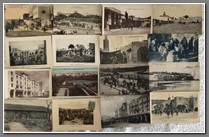 MR 226 MR 226 |  MR 226 MR 226 | 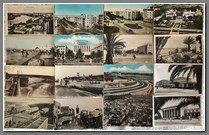 MR 226 MR 226 | 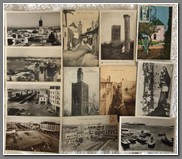 MR 226 MR 226 |
43 colonial postcards of Meknes. Both local scenes and architecture interest. Some cards issued shortly before independence. Some with military stamps. During the early part of the 20th century Meknes became a center of agriculture and viniculture, led mainly by French colonists who appropriated large amounts of land nearby. Meknes, like other cities, also hosted resistance to French authority. In 1937, a particularly serious and violent revolt erupted following attempts to divert the local river to benefit the French settler population during a time of food shortages for the native Moroccan population. A violent suppression of protests took place in the city which results in 13 dead and more injured.
Price: $1290.00
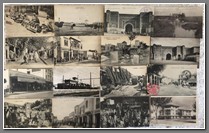 MR 224 MR 224 | 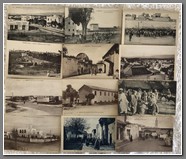 MR 224 MR 224 | 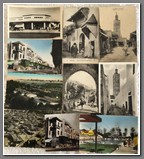 MR 224 MR 224 |
50 colonial postcards of Marrakesh. Colonail, local arab and architecture interest. In 1907, Dr. Mauchamp, a French doctor, was murdered in Marrakesh, suspected of spying for his country. France used the event as a pretext for war and on 30 March 1912, the French Protectorate in Morocco was established. After the Battle of Sidi Bou Othman, which saw the victory of the French Mangin column over the al-Hiba forces in September 1912, the French seized Marrakesh. The conquest was facilitated by the rallying of the Imzwarn tribes and their leaders from the powerful Glaoui family, leading to a massacre of Marrakesh citizens in the resulting turmoil. B
Price: $2000.00
 MR 222 MR 222 | 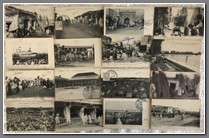 MR 222 MR 222 | 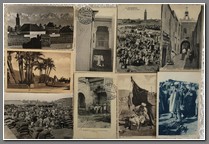 MR 222 MR 222 |



















